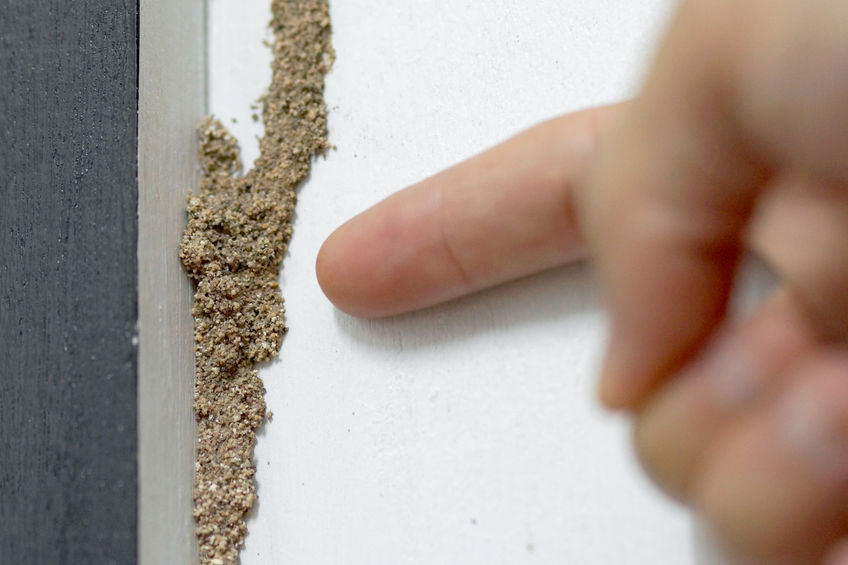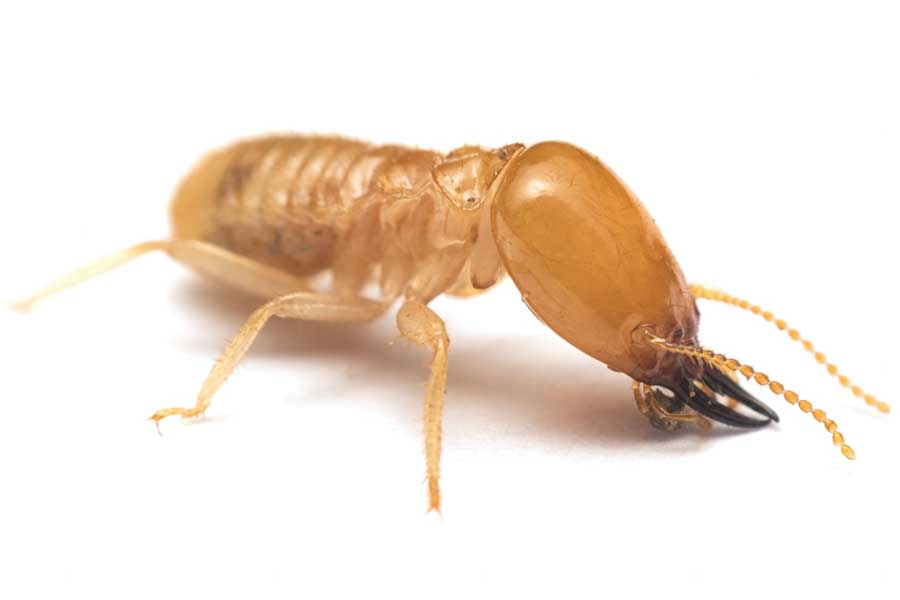Termites are small insects often confused for flying ants. There are different types of termite species, meaning they vary in appearance as well. There are still several similar characteristics that most termite species in Florida share.
Because termites can differ in both species and caste, they can also differ in appearance. Perhaps the most complicated part about accurately identifying termites is the fact that they are rarely seen. The discreet behavior within the inner structure of your home makes it difficult to notice them in the first place. Enlisting the help of our professional termite exterminators in Florida is one of the best ways to locate and identify termites.
Termites are a major problem for homeowners across Florida. The warm, humid climate provides ideal conditions for several different termite species to thrive. These wood-destroying insects can cause severe damage to homes if left uncontrolled.
In this article, we’ll take an in-depth look at termites in Florida. We’ll cover the main species, the signs of infestation why they’re such a big issue, and most importantly, how to prevent and get rid of them.
The Main Termite Species in Florida
There are over 20 different termite species found in Florida but only a few are considered significant pests
-
Eastern Subterranean Termites – The most common and destructive species in Florida. They live underground and build mud tubes to reach wood sources.
-
Formosan Subterranean Termites – An invasive species that causes major damage. They can chew through materials like plaster and thin metal.
-
Drywood Termites – Live in dry, structural wood above ground rather than soil. Common in urban and coastal areas.
-
Dampwood Termites – Seek out damp, decaying wood. Don’t cause as much damage but still a pest.
Subterranean termites that live in the soil are considered the most threatening to homes. Drywood and dampwood termites can also cause issues if left alone.
Recognizing Signs of a Termite Infestation
Detecting termites early is crucial to prevent severe damage. Here are some of the most common signs of termites in and around your home:
-
Mud tubes or shelter tubes on foundation walls, pillars, and other structures.
-
Swarming winged termites, especially in spring. Shed termite wings may be found around windows.
-
Hollow or cracked wood that sounds different when tapped.
-
Peeling paint or wallpaper.
-
Sagging doors, floors, or ceilings.
-
Small piles of winged termite droppings.
Don’t ignore these signs. Act quickly to get a professional inspection and treatment plan. The longer an infestation goes undetected, the more damage it can do.
Why Termites Pose Such a Threat in Florida
Several factors make Florida especially prone to termite problems:
-
Warm climate – Termites thrive in temperatures between 70-80°F. Florida’s heat is ideal for them.
-
High humidity – The damp environment allows termites to retain moisture. Drywood termites need humidity too.
-
Abundant food supply – Florida’s landscaping provides lots of wood debris for termites to consume.
-
Sandy soil – Makes it easier for subterranean termites to build colonies underground.
-
New construction – Urban development disturbs termite colonies, spreading infestations.
Termites cause over $2 billion in property damage nationwide each year. Homeowners in Florida spend over $700 million annually repairing termite damage, more than any other state.
Preventing and Controlling Termite Infestations
While termites pose a major threat, there are steps you can take to protect your home:
-
Remove wood debris like tree stumps and landscape mulch that provide food.
-
Ensure proper drainage around the foundation to prevent moisture buildup.
-
Seal cracks, crevices and utility entry points termites can use.
-
Install termite-resistant materials like concrete foundations and steel framing.
-
Have annual inspections to detect termites early before major damage occurs.
-
Use termiticide soil treatments, baits, wood treatments, and other measures.
If you suspect you already have termites, contact a licensed pest control professional immediately. They have the expertise and tools to fully eliminate an infestation and prevent future ones.
Termites are a formidable foe for Florida homeowners. Their sheer numbers, destructive power and persistence make them difficult to ignore. However, with vigilance and the right control tactics, it’s possible to protect your home from these ruinous pests. Pay attention for signs of termites, take preventive measures, and act swiftly at the first hint of an infestation. With a proactive approach, you can help ensure termites don’t destroy your most valuable investment.

Need Pest Control Service?
Leave your information below and we’ll be in touch with a FREE quote!
“*” indicates required fields First Name
*During normal business hours. After hours calls will be returned the next business day.
Serving Ocala | St Augustine | Gainesville | Palm Valley
Termites are small insects often confused for flying ants. There are different types of termite species, meaning they vary in appearance as well. There are still several similar characteristics that most termite species in Florida share.
The main characteristics of termites include:
- Termites range in size from ¼ – ½”
- Adult termites have 6 legs and straight antennae
- All termites have segmented bodies: a head, thorax, and abdomen
- Different termite castes are different colors, from off-white to dark brown
- Swarmer termites (reproductives/alates) possess wings

Because termites can differ in both species and caste, they can also differ in appearance. Perhaps the most complicated part about accurately identifying termites is the fact that they are rarely seen. The discreet behavior within the inner structure of your home makes it difficult to notice them in the first place. Enlisting the help of our professional termite exterminators in Florida is one of the best ways to locate and identify termites.
Here’s how the different species look:
- Subterranean termites are typically an off-white to dark brown/black color. Common subterranean species in Florida include the Asian termite, Eastern subterranean termite, and Formosan termite.
- Dampwood termites are much larger than other kinds of termites and can have a reddish tint on their bodies.
- Drywood termites can be a yellow-brown color, and wings that range from transparent to somewhat gray.
It’s termite swarming season in South Florida
FAQ
Are termites common in Florida homes?
Although Florida’s geographical features are mainly consistent throughout the state, the South Florida area is at an especially high risk of termite infestation.
What time of year are termites active in Florida?
Thanks to Florida’s warm, humid climate, there really is no “termite season” in The Sunshine State—these nuisance pests are active almost year-round.
How do you know you have termites in Florida?
The main signs of termites activity are mud tubes in your yard, termite droppings in your home, shed wings, and damaged wood.
Can you sell a house with termites in Florida?
If you have any structural damage, whether or not it was caused by termites, it can be difficult to sell your home. This doesn’t mean that it’s impossible, though—only that the value might decrease if the damage goes unfixed.
